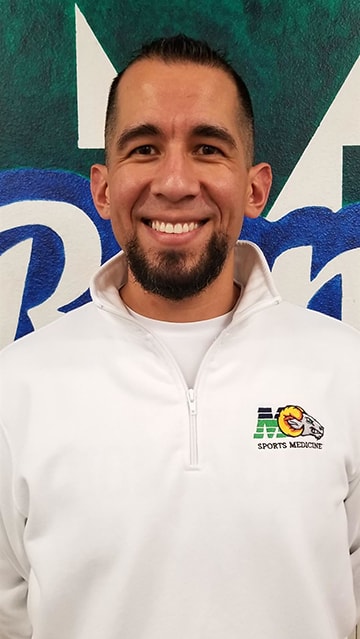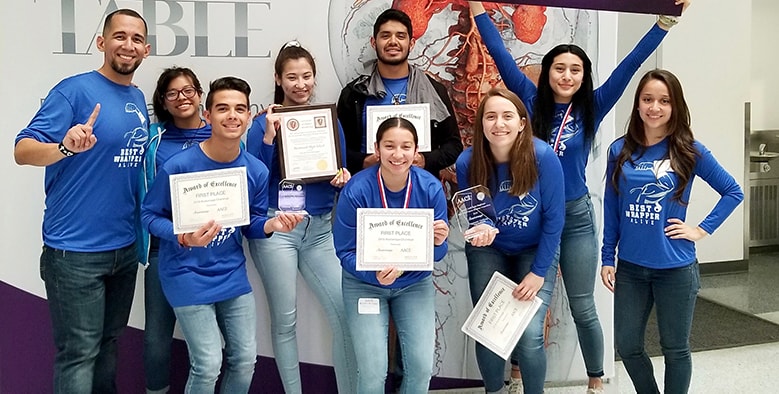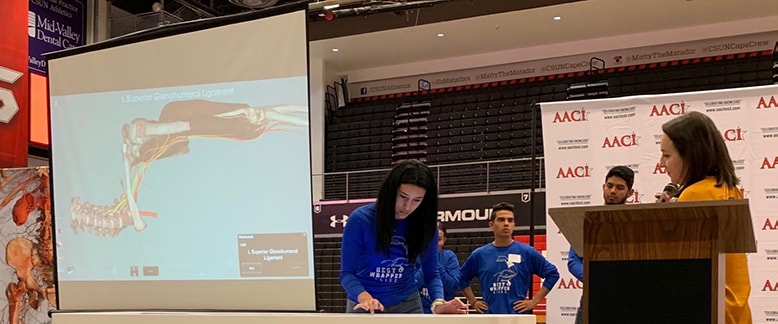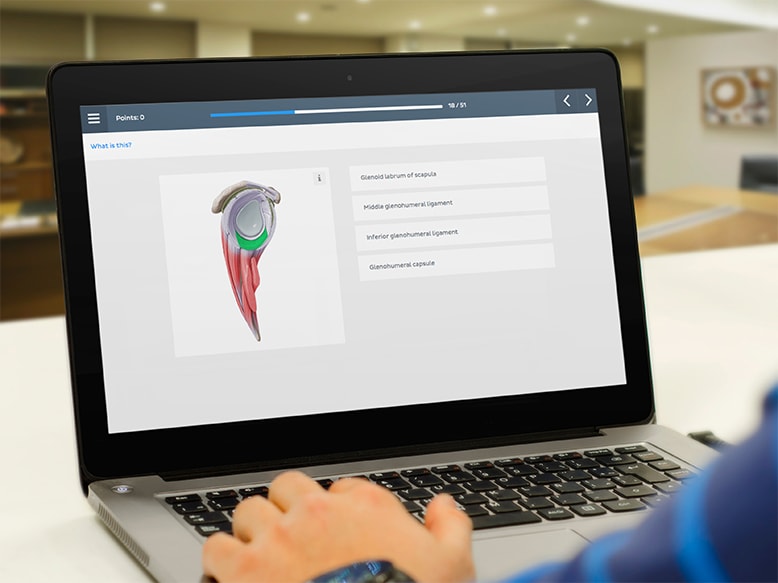Did you know that Kenhub is not only used by more than 1,000,000 students worldwide, but teachers and university professors, too?
When athletic trainer Eric Fajardo entered his sports medicine class into a prestigious anatomy competition, he knew he needed some effective teaching tools that would get his students excited about learning anatomy. After messaging us to share the news that they had won with flying colours, we had to share his inspiring story.
In this exciting interview, we had the opportunity to speak to both Eric and his students. Here’s what they had to say.
Teaching Anatomy in Sports Medicine

In the field of sports medicine, why is it important to have a good grasp of anatomy, and how does it come into your everyday teaching?
Eric: A lot of the students in my class are looking to get into the medical field - to become physical therapists, nurses, doctors, athletic trainers and so on. For each of those fields, you really have to have a baseline knowledge of anatomy.
What are your go-to tools for teaching anatomy? Have you always used Kenhub?
Eric: There was really no resource before Kenhub that I had ever used with consistency. As a high school teacher, image-wise a lot of the time you simply use what Google gives you and make that the base for developing a presentation or lesson plan.
I began to notice that some of the clearest and easiest to understand anatomy images I was coming across were all from Kenhub, so I started using them exclusively for our anatomy lessons.
When I entered my class into an anatomy competition, I decided to upgrade to the Premium product to help them improve their structure identification skills.
Why Anatomy Tests Are The Key to Successful Learning
Tell us about the anatomy competition where you and your students took first place.
Eric: The competition was hosted by Anatomage, who use a computer based cadaver software which allows you to use your finger like a scalpel to identify and manipulate structures. There was a pre-qualifying round where they would take 2 high schools into the competition room at a time. In order to qualify, you had to use this software to identify 30 structures of the shoulder within 3 minutes.
When our time to enter the competition room arrived, the rules were explained to us and our competitor high school, and we were then asked if we had used the software before. The other high school said that they have one in their training room, but of course our class had never used, seen or heard of it. We had been preparing for the competition using Kenhub.
Every single structure of the shoulder and lower arm was up for identification - nerves, arteries, veins, ligaments, bursas - you name it. The other high school went up first and correctly identified 15 out of 24 sites, but by the time that the timer went off, my class had managed to correctly identify 29 out of 30. Everyone else in the room was looking at us as if to say “What just happened? You said you had never used this software before - how did you score so well?!”
The final round was us versus two other teams. This time, there were 60 structures to identify in 5 minutes. The first team ended up with about 31 points, and then the second team who had previously used anatomage software got 47 points. We won the competition with 67 points.

How did you use Kenhub Premium as a class?
Elias (one of Eric’s students): We used a combination of things. We would use the videos first to get an overview of the topic, and then we’d take a quiz to make sure we’d really understood everything.
Eric: In order to do better on the quizzes, we would first go off of the atlas where I would outline to the students what they could see. We would then watch the videos, and finally use the quizzes to identify structures. We would take the same quiz 2 or 3 times. Even if we got the answers right every time, we would test and retest again to make sure we had it.
Elias: The most challenging part of learning anatomy is identifying structures. Learning from a cadaver is difficult because it isn’t neatly organised with each structure clearly highlighted. Everything is all mixed up and all over the place. The benefit of computerized images like the ones in the Kenhub quizzes is that they are accurate, but also easy to learn from.

Eric: The high score we got on the competition simply came back to the structure identification quizzes we had been taking at Kenhub. The Kenhub illustrations were so accurately depicted that they looked just like the structures we were seeing on the computerised cadaver.
We had practiced identifying structures using the quizzes so often, so that when we were faced with the real cadaver, the students just knew instantly what was what.
What made you want to upgrade to Premium?
Eric: There was a lot of fantastic content on the free version of Kenhub, but the spaced repetition function on the quizzes was what made me want to try Kenhub Premium.
Instead of just teaching my class using a powerpoint presentation with slide after slide of anatomy images, I decided, “my students need to actually be quizzing themselves on these topics, because that’s how their knowledge will be tested”.
The Advantage of Interactive Anatomy Teaching Tools
What do you think it is about Kenhub that makes it particularly easy to learn anatomy?
Eric: Some of the quizzes had hundreds of questions, but my students never got bored. They had such a great time using them - there was never a time where they were complaining. On the contrary, you could see that the light was going on in their minds as they started to understand and gain confidence on different topics. After only a short time, they were able to identify what structure they were looking at within seconds.
Karla (Student): Using the quizzes was a challenge, but it was fun and exhilarating. They were something new that we hadn’t seen or used before, so we felt optimistic about using them to improve our knowledge.
Megan (Student): I like how Kenhub highlights the specific structure you’re looking at and dissects everything overlaying it so that you can focus on that one structure.
Karla (Student): I liked that the Kenhub illustrations were able to make anatomical structures look more eye-catching, appealing and easier to identify than on a cadaver, while still remaining so accurate.

Would you recommend Kenhub to other anatomy teachers as a class learning tool?
Eric: Most definitely. Kenhub claims to help students learn anatomy step by step, and that’s exactly what we’ve experienced. It breaks the human body down into its simplest forms, and then puts all the pieces back together to form a complete picture of the human anatomy. This encourages students and makes them feel like anatomy is something that they can actually understand.
As much as we would love to keep it a secret so we can keep on winning, I think that anyone teaching about the human body - regardless of whether you’re a high school or college teacher - can benefit from using Kenhub. I highly recommend it.
I think some of the teams at the competition were blown away by what my students knew. But the secret was Kenhub. So I just felt it was right to give you the credit for putting Kenhub out there and making it simple for students to understand.
Would YOU like to share your story of how Kenhub helped you to learn anatomy? Get in touch!
If you want to supercharge your anatomy learning and boost your grades just like Eric did for his class, be sure to register for your FREE Kenhub account today. Our quizzes, articles, videos, atlas AND anatomy geeks are here to guide you through your anatomy education every step of the way.







